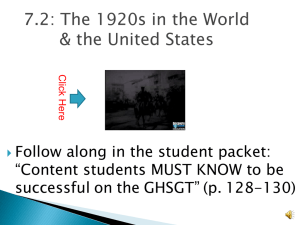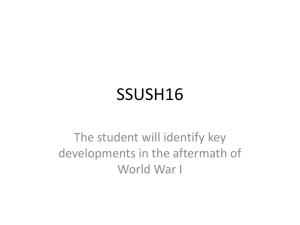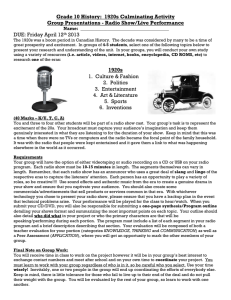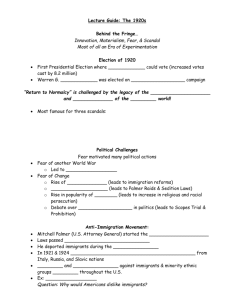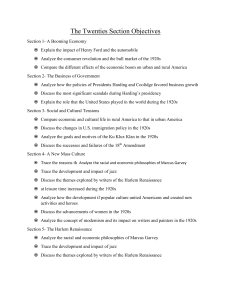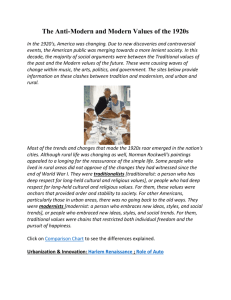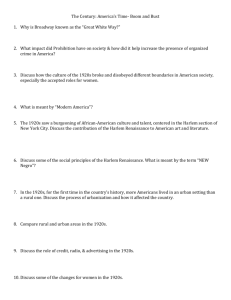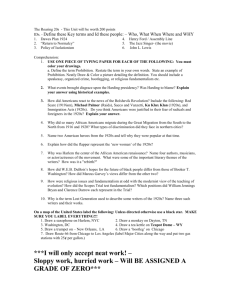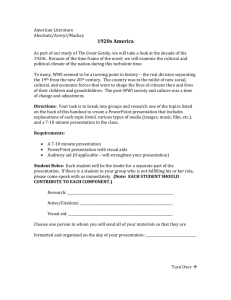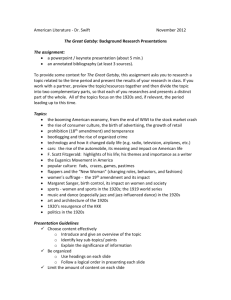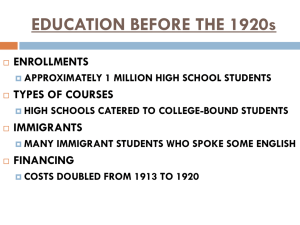Chapter 24 Study Guide - Livingston Public Schools
advertisement
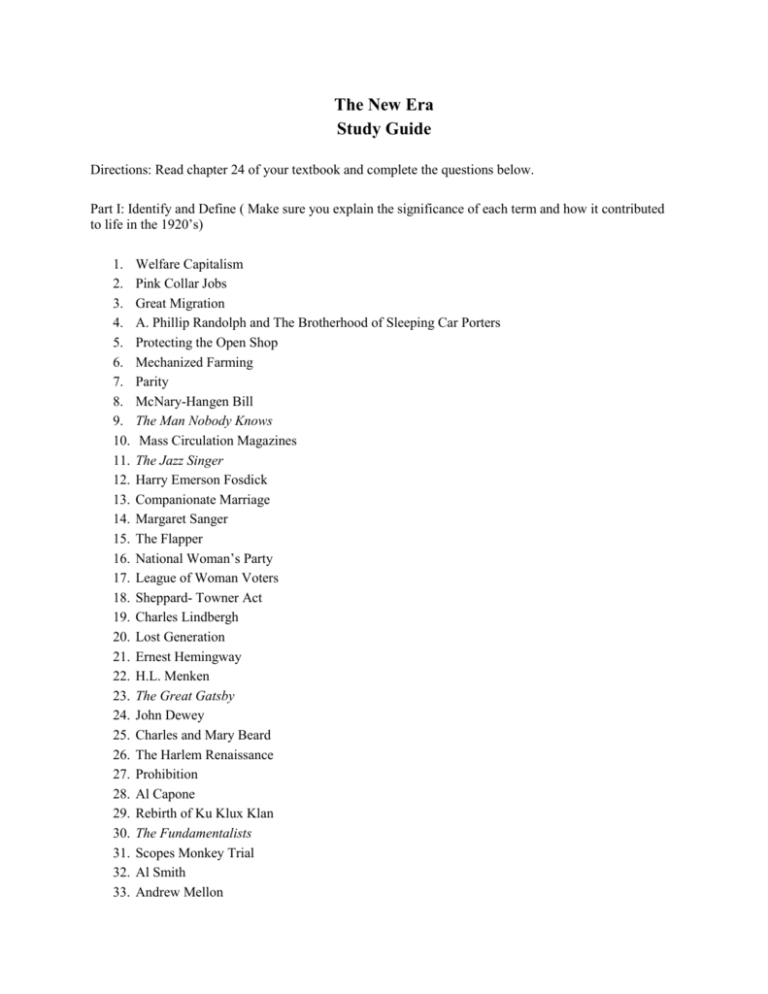
The New Era Study Guide Directions: Read chapter 24 of your textbook and complete the questions below. Part I: Identify and Define ( Make sure you explain the significance of each term and how it contributed to life in the 1920’s) 1. 2. 3. 4. 5. 6. 7. 8. 9. 10. 11. 12. 13. 14. 15. 16. 17. 18. 19. 20. 21. 22. 23. 24. 25. 26. 27. 28. 29. 30. 31. 32. 33. Welfare Capitalism Pink Collar Jobs Great Migration A. Phillip Randolph and The Brotherhood of Sleeping Car Porters Protecting the Open Shop Mechanized Farming Parity McNary-Hangen Bill The Man Nobody Knows Mass Circulation Magazines The Jazz Singer Harry Emerson Fosdick Companionate Marriage Margaret Sanger The Flapper National Woman’s Party League of Woman Voters Sheppard- Towner Act Charles Lindbergh Lost Generation Ernest Hemingway H.L. Menken The Great Gatsby John Dewey Charles and Mary Beard The Harlem Renaissance Prohibition Al Capone Rebirth of Ku Klux Klan The Fundamentalists Scopes Monkey Trial Al Smith Andrew Mellon Part II: Critical Thinking (Evidence from the chapter must be used in order to properly answer these questions) 1. Why did contemporaries refer to the 1920s as the "New Era"? Explain whether that was an appropriate label. 2. Discuss the reasons for the industrial boom in the 1920s after the initial period of economic readjustment following World War I. 3. Many people gained from the boom of the New Era, and others fell through the economic cracks. Who gained? Who did not? 4. Analyze the forces that contributed to the emergence of a modern secular American culture in the 1920s. 5. One of the questions that has troubled historians concerns the legacy of progressivism. Looking at the 1920s, would you argue that progressive thought had died or triumphed? Why? 6. How and why did the role of women change in American society during the 1920s? 7. Impressions of the 1920s vary, according to which vision one accepts Briefly describe each of those visions and tell how one or several capture the real significance of the decade. a. b. c. d. e. f. g. h. i. j. k. Members of the ruling elite, such as Andrew Mellon and Herbert Hoover Self-Made men, such as Charles Lindbergh Disenchanted, such as H. L. Mencken and Ernest Hemingway Provincial traditionalists, such as William Jennings Bryan African Americans in the Harlem Renaissance White Fugitives Chinese immigrants Japanese immigrants Filipino immigrants Mexican immigrants Farmers. 8. Discuss the growth of consumerism that took place in the 1920’s and its effect on American society. 9. Explain the role of advertising in a consumer society. 9. Why was the "New Era" a Republican era in general and one in which Warren G. Harding and Calvin Coolidge, in particular, were elected as presidents? Discuss the ways in which their personalities and policies reflected the times. 10. Why were the forces of prohibition, religious fundamentalism, and nativism so strong in the 1920s? 11. How did the urban dance halls reflect challenges to the proprieties and inhibitions of traditional public culture in America? 12. Discuss the changes that took place in the “Youth Culture” of America. 13. Discuss what they mean by the “Decline of the Self-Made Man”. 14. Discuss the significance of the Harlem Renaissance on American society and African Americans in particular.

